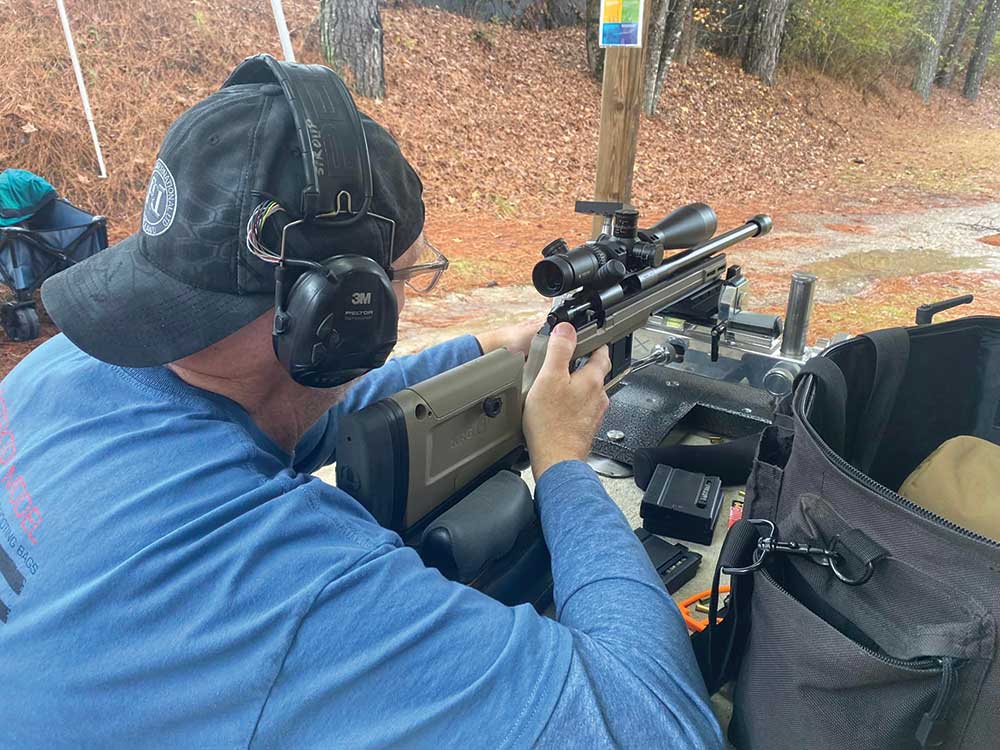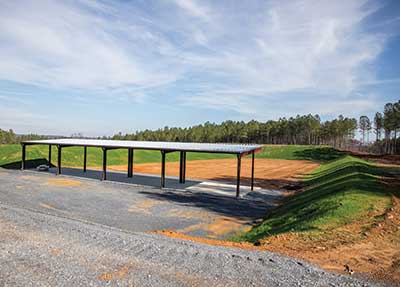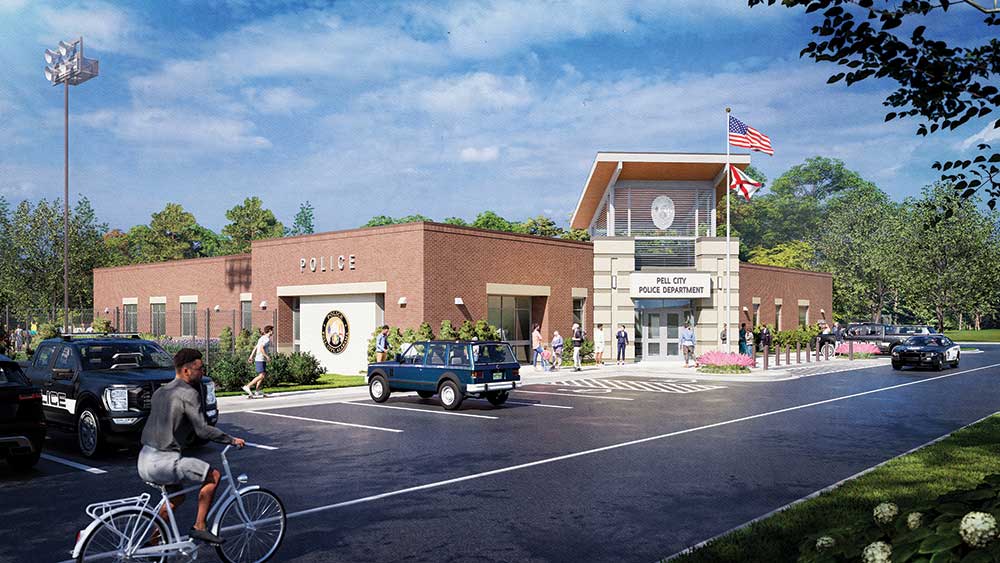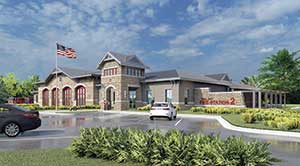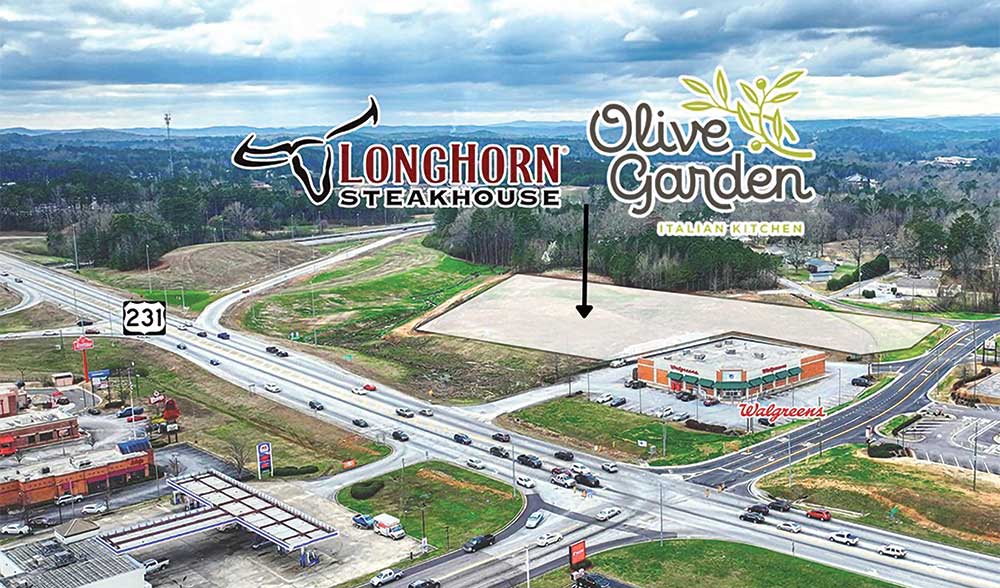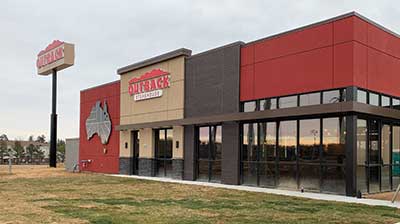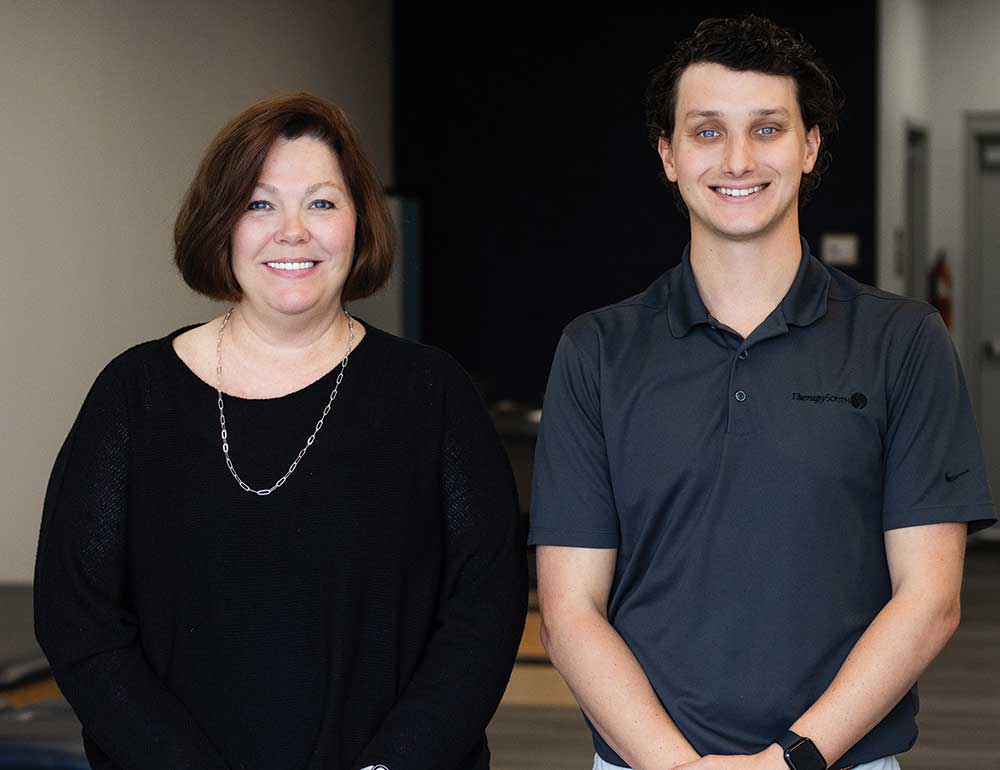A range of the highest caliber
Story by Roxann Edsall
Photos by Mackenzie Free
Drone photos by Eric Love
Additional photos by Michael Goodman
Photos by Ed Tyler
Contributed photos
Like so many, they were looking for a new home. The group had a place they’d outgrown and needed more space, open concept, for sure, with room to breathe. Their dreams were realized when they found 877 acres for sale in St. Clair County.
The search committee for Brock’s Gap Training Center had been peppering the area with inquiries, targeting any large tracts within 30 minutes of their Hoover location. They zeroed in on the perfect location on Camp Creek Road in Pell City. They sold their 90 acres in Hoover and were able to purchase almost 10 times the acreage in St. Clair County for their shooting range and training facility.
Recently opened, the facility boasts one of the longest ranges in the southeast. “We’ll have a 1,400-yard range as one of our offerings,” says Michael Goodman, president of Brock’s Gap Training Center, a membership-based shooting club. “It’s uncommon to have a range of that length. People usually have to travel to Tennessee to practice shooting that distance.”
“There’s a community that really values those longer ranges,” adds Goodman. “We’re hoping to attract those shooters from Alabama, Georgia and Tennessee to come to our range.” Additionally, the new center will have 100-yard, 50-yard and 30-yard ranges with covered shelters, along with pistol bays and two “plinking” ranges. (A plinking range is a shorter distance range with metal targets.) Ranges also offer either bench rest or positional shooting.
As you look out over the acreage, you see rows of uniformly sculpted berms, well-drained and seeded. In between those berms, the shooters are protected from ammunition from other ranges.
Range safety officers hold each group to strict code of hard and fast rules, including gun expert Jeff Cooper’s “Coopers 4” rules: 1) Treat every firearm as if it is loaded, 2) Keep your finger off the trigger until you are ready to fire, 3) Never point your firearm at anything you do not intend to shoot, and 4) Be sure of your target and what is in front of and behind it.
Brock’s Gap Training Center offers courses in gun safety, concealed carry, women’s personal safety, competitive shooting and training for security teams. They currently assist local law enforcement by providing facilities for their officers to practice for certifications. They also have had high school students preparing to enter the military come to their facility for training.
“Safety is number one,” emphasizes Goodman. “We hope to encourage and empower people to be responsible gun owners. We prioritize safety, gun maintenance and understanding of the responsibilities of gun ownership.”
Having the facilities to practice with their firearm keeps the gun owner familiar with it and establishes safe and responsible use and care habits. “It’s especially important, if you’re using your gun for self-defense,” explains Goodman. “You need to be introduced safely to your firearm and learn to establish safe handling practices.”
While Brock’s Gap is a private facility, membership is open to the public. The membership application process is overseen by an elected board. You do not have to be a member to participate in classes or to come to the matches. Those are all open to the public.
History of growth
In the 62-year history of Brock’s Gap Training Center, they’ve grown to 900 members and host shooting matches and competitive shooting events nearly every weekend.
They’ve already begun hosting their first matches at the new facility. Those matches are a boost for the local economy, with state-level matches drawing more than 100 people from out of the area into St. Clair County for food and lodging revenue. Brock’s Gap has hosted matches for the International Defensive Pistol Association (IDPA), Steel Challenge Shooting Association (SCSA) and the United States Practical Shooting Association (USPSA).
With the move, Brock’s Gap has been able to expand the number of shooting bays and stage areas for matches. Most matches are held in “berm-defined” bays, using 6-12 of these bays set as “stages.”
They play in a squad of 8-10 shooters. As in a golf match, those in the squad have handicaps and compete against those with similar handicaps. When each shooter has completed the targets in each stage, the group moves to the next stage in the next bay.
Some of the larger matches can use up to 20 stages. With more bays, they will be able to host larger matches and even have matches that overlap dates. The additional bays will give them the latitude to set up stages for incoming matches while current matches are concluding.
Facilities at Brock’s Gap Training Center include the Range Headquarters building, with restrooms, ice and water availability, and a training room. Future plans include the addition of a small RV park to accommodate out-of-town match participants and an EMS helipad. Current plans use just 250 acres of land, leaving plenty for future development and growth.
“There’s a large recreational shooting community in Alabama,” says Goodman. “We need facilities like this one to be able to participate safely in this sport.” There are those like Goodman who shoot every weekend and some who have specific seasonal needs. “We have people who use our facility to zero their rifles to get ready for hunting season,” he says.
The training facility also supports Scholastic Action Shooting Program (SASP), a national program that provides an environment for student athletes that supports learning through shooting sports activities. They have also been a resource for scouting groups through the years.
“A friend introduced me to competitive shooting,” says Goodman, “so I’d been shooting off and on my whole life. Once I joined Brock’s Gap, it became an every week kind of thing.”
If you’ve set your sights on shooting as a hobby or sport, you now have a neighbor in St. Clair County with a high caliber facility ready and waiting for you to take aim.
Editor’s Note: Visit brocksgap.com for more information about Brock’s Gap Training Center.











